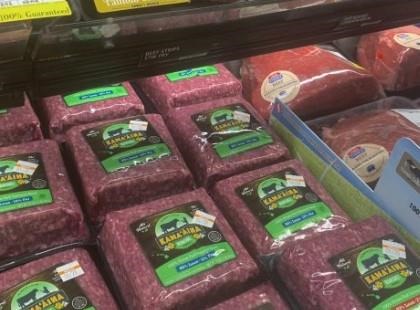By Clayton Baumgarth
Gunthorp farms in La Grange, Indiana, is a busy place with lots to do. There are pastured pigs, lambs and turkeys, as well as an on-site USDA-inspected processing plant.
At the moment though, there’s a distinct lack of gobbling going on for what is usually peak turkey season. In fact, not a single living bird lives on the property; any that were here this year have already been processed and are waiting in a freezer.
Greg Gunthorp, owner of the 275-acre, four generation-strong family farm, said this year was a challenging one for raising turkeys.
“For the last 14 years, we've raised turkeys, two batches of them in the summer, and then our fall birds being fresh birds for Thanksgiving,” he said. “This year because of labor concerns, we raised all of our turkeys in the summer.”
For the turkeys he did raise this year, another major pressure point was the avian flu that’s been all over the country. About 7 million turkeys have been killed nationwide, with Indiana accounting for roughly 500,000 of that number.

These frozen turkeys are the only ones currently on Greg Gunthorp's farm. Usually this time of year sees the farm full of them.
The Avian Flu of 2022
This strain of avian flu was first spotted in Europe and Asia a few years ago. Poultry professionals worried it would be introduced in the Americas, and in February of this year, their fears were realized.
Avian flu can present itself in a few ways. Farmers might notice a drop in egg production, respiratory issues like coughing or sneezing, swelling of the head, goopy eyes, or even sudden unexplained death. It spreads via migratory waterfowl who pick up the disease and pass it along via their droppings as they head north for the spring.
This strain checks all those boxes, but it has been markedly more hardy than previous years. Denise Derrer, public information director with the Indiana Board of Animal Health, said that is causing problems going into the end of the year.
“Typically, a big surge will happen and then it tends to die out over the summer,” she said. “This year, however, we've been seeing another surge happening in the fall with the migration that happens when they're going south. So we're seeing that all over again.”
Flocks across the nation have been heavily affected, but Indiana has managed to fare well. “We've had a number of cases in Indiana, we've not had any new diagnosis since the first week of September. So currently, we're in good shape,” Derrer said.
Derrer pointed out that while the disease has been rampant this year, humans are at no risk of getting bird flu from processed meats and eggs.
The Impact on Farmers
Just under 500,000 birds have been infected in a state that typically produces 20 million turkeys a year.
Becky Joniskan, president of the Indiana Poultry Association, feels for the affected farms.
“When you look at the numbers, it doesn't look significant. But when it is your farm, it is the world,” she said. “And so we do everything we can to be there to support those farmers.”
If a highly pathogenic disease like this gets into a flock’s barn, farmers would most likely have to cull their entire flock. Not only that, but afterward there’s a lengthy and costly sanitization process of the farm to ensure the disease is truly gone before they can begin rebuilding their livelihood.
Strong partnerships between the Poultry Association, Board of Animal Health, and USDA can help keep these events from destroying the livelihoods of farmers, up to a certain percentage of their flock’s value. Payments come in what’s called indemnity funds.
“And then they also get support in helping to clean and disinfect their barns and manage any materials that are generated from that whole response,” Joniskan said.
Click here to see more...